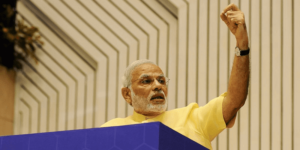
For app marketers, retaining potentially disengaged users does not add any business value. In a world with a diminishing attention span, captivating and turning users from casual to hooked must be the foremost priority.
Advancements in marketing technology (martech) have raised the ceiling for app stickiness even further. Today, creating a sticky app requires marketers to not just have an in-depth understanding of the field they operate within, but they must also be knowledgeable about game theory and the novelty effect, among several other things.
Taking on such a tall task all alone can be quite daunting. The answer? Bring the ‘tech’ back to ‘martech’.
While customer retention is a great metric to monitor, it is only a measure of the users who stayed over a certain period. It doesn’t give marketers any insight into how engaged the users have been. App stickiness, on the other hand, is the ratio of daily active users to monthly active users. It represents the portion of monthly users who return to the app daily—much more useful in telling how engaging an app truly is.
But what do app stickiness rates generally look like?
App stickiness rate
Social media apps are by far the stickiest app type in the industry with a stickiness quotient as high as 50%. Gaming apps are likely to be second, with a stickiness quotient of around 20%.
Our benchmark reports show that ecommerce, food delivery, and travel apps follow suit with stickiness quotients ranging between 10% and 20%. While the differences may seem like a few percentage points, when extrapolated at the level of let’s say 1 million, each percentage point accounts for thousands of users who could have been converted.
So, what is the key to creating a sticky app?
Psychology of novelty
We are hardwired to seek out new experiences. Novelty releases dopamine, the ‘happy hormone’ resulting in feelings of well-being and satisfaction. So, when we come across something new, we focus on how it can reward us in one way or another. Thus, we initially obsessively explore our environment for rewards.
With respect to modern mobile apps, novelty fosters a sense of curiosity and excitement around the app’s capabilities and features. When users download a new app, they want to ensure it is worth taking up space on their device and meets expectations. So, they may rummage through the interface and explore its features. They may also return to the app because it’s top of mind for the first few weeks in search of the ‘reward’.
But everyone who has failed at trying to adhere to their New Year resolutions knows that novelty wanes. This is because our brains learn that the stimulus, once familiar, has no reward associated with it and so it loses potency.
Therefore, only completely new objects increase our levels of dopamine. It takes 66 days for a behaviour to become automatic, but 28% of users uninstall the app in the first month while 80% do so in the first 90 days. Thus, the gap becomes obvious.
Marketers need to get users to stick past the initial onboarding phase and maintain novelty until the usage of the app becomes automatic. They must look at creative ways of gamifying the experience and providing rewards the user will actually like.
Khatabook, a B2B ledger app, employed personalised messaging, gamification, videos, and quizzes to engage users, increase click-to-conversion rates, and maintain user loyalty. These strategies helped the app keep users active and connected, ultimately fuelling growth. The app’s segmentation approach allowed for customised messaging based on user behaviour and preferences.
On the other hand, marketers must also realise that some users don’t stick regardless of the efforts put in.
Imagine a student whose parents are away for a weekend vacation. The student uses meal delivery apps as a makeshift solution. Despite everything the marketer can do to make them stick, the chances are slim. If only there were technologies that would automatically identify such patterns of behaviour and provide valuable insights to marketers!
Predictive AI analytics
Leveraging advanced AI models to understand patterns of behaviour that will lead marketers to the most probable loyal customers is essential. In an ideal world, marketers would like to dedicate the same resources in pursuing customers across all cohorts, but reality is far from that.
The model could automatically sift through the user base, observe recent app usage patterns, and verify demographics and purchase history to let the marketer know where the value is. Marketers can then make a narrower but much more incisive effort to convert them to hooked users.
With a network of over 30,000 stores globally, Starbucks gathers over 100 million transactions per week, allowing for large volumes of data to help inform marketing and engagement campaigns. The company utilises predictive analytics to enhance pricing decisions by factoring in real-time sales data along with seemingly unrelated factors such as weather and insights into local events. It can then adjust and display in-store prices strategically for maximising benefit.
These models can also be leveraged for lead generation with higher conversion probability. This has the added benefit of opening up invaluable bandwidth for marketers who can then look at the broader campaign strategy and tend to urgent matters more promptly.
As the app economy gets increasingly competitive and the market becomes saturated, marketers must turn to cutting-edge martech solutions to ensure they don’t get left behind.
By understanding the interplay between marketing, psychology and predictive analytics, marketers can ensure users not only stick around but also actively engage during their stay. Afterall, an app with a modest user base but high app stickiness provides a much more fulfilling customer experience than one with a bloated user base but poor stickiness.
The author is Vice President – Data Science, CleverTap, a customer engagement platform.
(Disclaimer: The views and opinions expressed in this article are those of the author and do not necessarily reflect the views of YourStory.)










